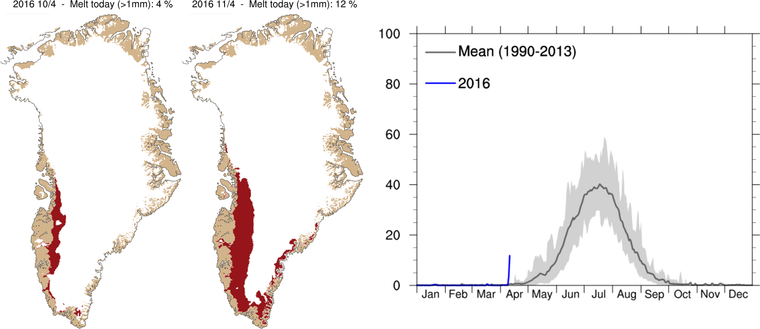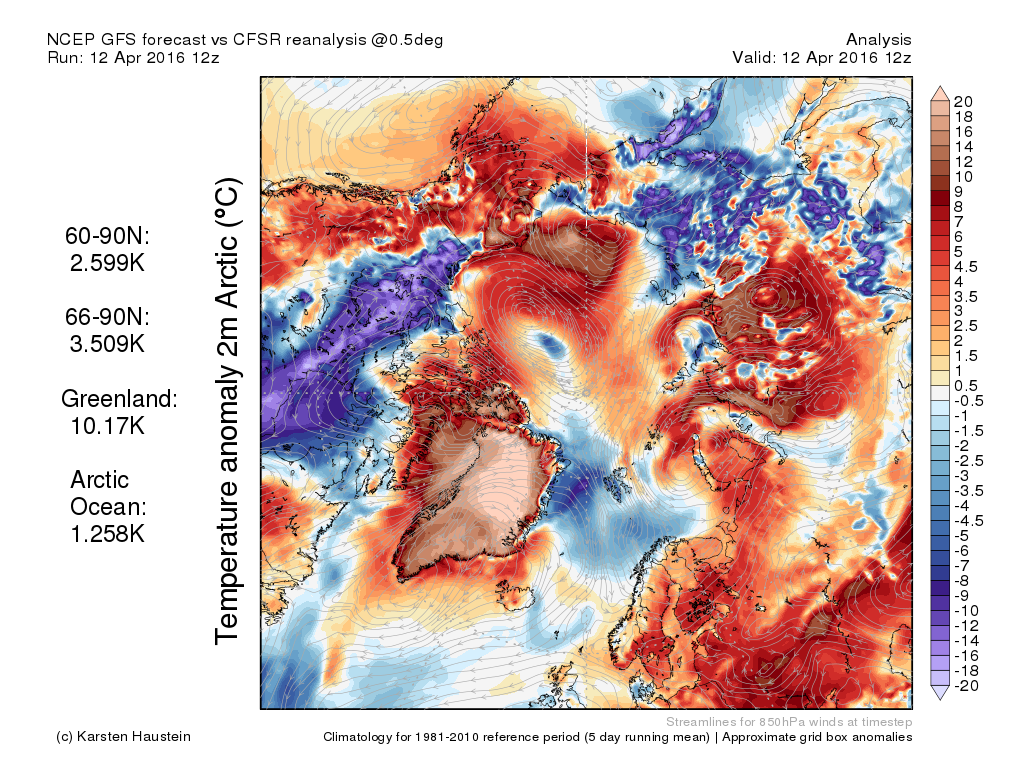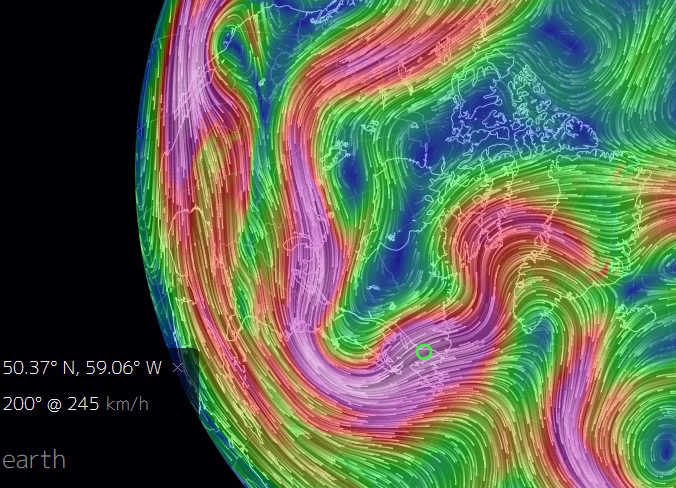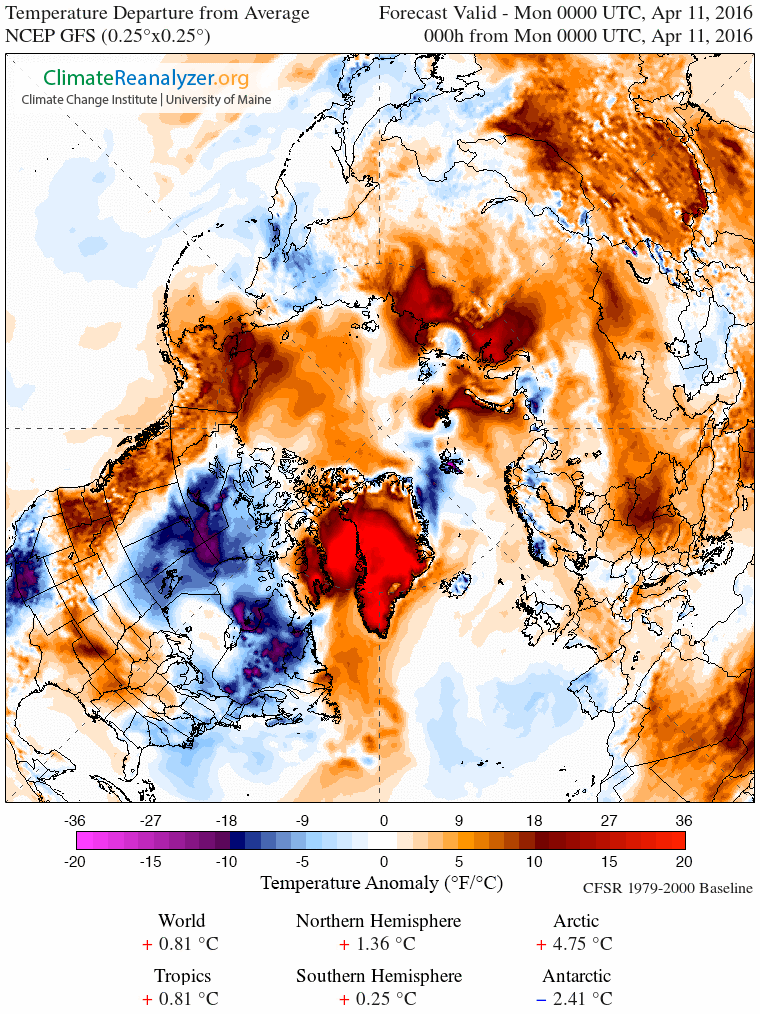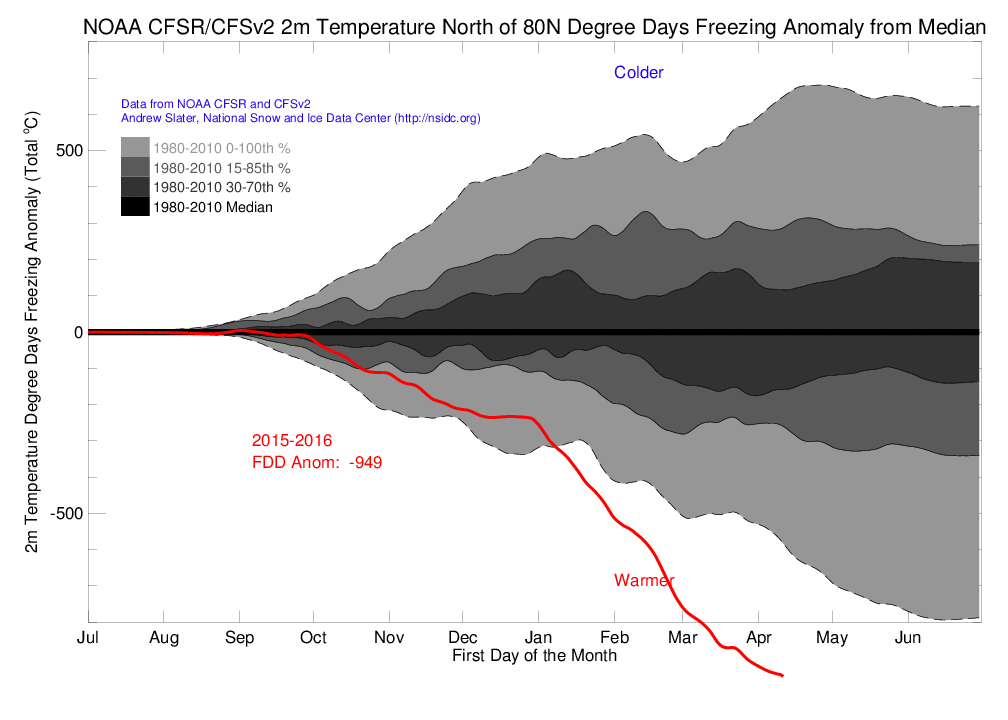The oil industry's leading pollution-control consultants advised the American Petroleum Institute in 1968 that carbon dioxide from burning fossil fuels deserved as much concern as the smog and soot that had commanded attention for decades.
Carbon dioxide was "the only air pollutant which has been proven to be of global importance to man's environment on the basis of a long period of scientific investigation," two scientists from the Stanford Research Institute (SRI) told the API.
This paper, along with scores of other publications, shows that the risks of climate change were being discussed in the inner circles of the oil industry earlier than previously documented. The records, unearthed from archives by a Washington, DC, environmental law organization, the Center for International Environmental Law (CIEL), reveal that the carbon dioxide question—an obscure corner of research for much of the 20th century—had been closely studied since the 1950s by some oil company researchers.
By the 1960s, the CO2 problem was gaining wider scientific recognition, especially as President Lyndon B. Johnson's science advisers and leading experts brought it to the attention of the White House in 1965.
"Changes in temperature on the world-wide scale could cause major changes in the earth's atmosphere over the next several hundred years including change in the polar ice caps."
Ten years later, the world's leading oil company, Exxon, would launch an ambitious in-house research program into the emerging science of climate change, as detailed by InsideClimate News last year in an investigative series. Beginning in 1978, Exxon researchers hoped their work would identify the risks climate change posed to the company's business and earn it a seat at the table when policymakers moved to limit CO2 emissions, according to internal documents. By the late 1980s, the company and its allies would instead challenge the scientific basis for strong action on climate change.
In a new series of articles, ICN begins to examine how the industry confronted pollution concerns during the infancy of climate research in the mid-20th century. It is based on hundreds of public documents assembled by CIEL, along with others gathered by ICN.
The documents trace early academic research into rising carbon dioxide levels. They show how the oil industry monitored that published work, and help explain the beginnings of its own research. They also show how industry's reaction to mid-century regulation to curtail other forms of air pollution, such as smog, helped shape its approach toward the risks of carbon dioxide.
The documents reveal a deep and persistent interest by industry in the CO2 issue, according to Carroll Muffett, a lawyer who is president of CIEL. If it is shown that oil companies knew fossil fuels posed dangers to the public, he said, the industry might become vulnerable to product liability complaints.
"From a products liability perspective, these documents raise potential claims that oil companies failed to warn consumers about a potentially serious risk linked to their products," he said.
Muffett's institute, an advocacy group that provides policy research and legal counsel on energy and environmental matters, is releasing its findings just as several state attorneys general have begun investigating how much oil companies knew about climate change and what they decided to do with their knowledge.
"Once the companies learned this science, they can't unlearn it," Muffett said. "Everything they did after this is done against the backdrop of the information they have from at least the 1950s onward.
"This to me is a critical point," he said. "When Exxon and other companies are funding climate change denial in later stages and focusing on uncertainties, how does what they are saying now compare with what they knew at a much earlier stage?"
Exxon has responded that its scientists at the time found that "many important questions about climate change remained unanswered and more research was needed." A spokesman for API did not respond to requests for comment.
Pollution Concerns Begin Rising
By the late 1940s, industrial pollution from the wartime surge and post-war boom began alarming the public. In particular, smog increasingly plagued Los Angeles, garnering the attention of the press and new pollution-control agencies. The sky turned a pale yellow, residents routinely became nauseous and their eyes burned, children were forced to play indoors, and acres of crops withered.
By the early 1950s, new science pointed to the oil industry as a major culprit, showing that nitrogen oxide emissions and uncombusted hydrocarbons from car tailpipes and refineries formed smog when exposed to sunlight.
As new agencies spawned new regulations, API and similar organizations set up a task force called the Smoke and Fumes Committee to monitor air pollution research and to commission projects by a handful of key consultants, including SRI. Originally affiliated with Stanford University, it was the industry's main pollution consultant, and eventually became an independent firm in 1970.
The work of the Smoke and Fumes Committee armed the industry for a prolonged struggle against what it considered overzealous regulation, which was based on what the oil companies and SRI called flawed science.
Meanwhile, a growing number of academics had turned their attention to rising CO2 concentrations in the atmosphere, tracing where the gas came from and the role that certain "sinks," such as the oceans and forests, played in absorbing it.
Roger Revelle, the director of the Scripps Institution of Oceanography, and his colleague Hans E. Suess published a landmark paper in 1957 about increasing CO2emissions and the role of the oceans in absorbing some of it. The media, including The New York Times and Time magazine, sporadically wrote stories about increasing CO2 in the atmosphere.
Scripps scientist Charles David Keeling installed machines at the Mauna Loa Observatory in Hawaii to measure carbon dioxide levels on a regular basis.
The years between 1957, when Revelle first concluded that the oceans would not absorb all industrial CO2 emissions, and 1960, when Keeling accurately measured atmospheric concentrations and showed that they were definitely increasing, ushered in a new age of expanding climate research.
Already, some oil company scientists were conducting basic CO2 research, including several with Humble Oil, which eventually became part of Exxon.
By then, it was generally accepted that the burning of fossil fuels had released significant quantities of additional CO2into the atmosphere, with some studies putting manmade emissions at 13% above natural levels since the Industrial Revolution began.
As Humble's scientists explored issues like whether the varying climate in wet and dry conditions might influence the rate of carbon uptake by trees, their work intertwined with the rapidly evolving field of climate studies.
A paper by independent scientists in 1958 determined that Revelle and Suess had probably underestimated how much CO2 would build up by the year 2000. The rise could be enough, they noted in passing, to have considerable implications for planetary warming.
A Presidential Spotlight
The report by Robinson and Robbins to API in 1968 was an unusually plainspoken assessment of the risks of CO2emissions within the walls of industry. It is significant not as original research, but as confirmation that the industry recognized a consensus reaching the highest levels of government.
"It seems ironic," the report said, "that given this picture of the likely result of massive CO2 emissions, so little concern is given to CO2 as an important air pollutant."
The SRI report emerged after the carbon dioxide problem had caught the attention of the White House.
Acting on a warning from his science advisers, Johnson became the first president to publicly mention rising CO2 levels as a problem on par with smog or bomb test fallout. In a message to Congress in February 1965, he declared: "Air pollution is no longer confined to isolated places. This generation has altered the composition of the atmosphere on a global scale through radioactive materials and a steady increase in carbon dioxide through the burning of fossil fuels."
SRI's report was mostly based on a paper, "Atmospheric Carbon Dioxide," that was part of a volume prepared by the President's Science Advisory Committee (PSAC) in November 1965.
That 20-page paper, written by Revelle, Keeling and three other top climate scientists, was submitted to the president at a time when environmental concerns were just blossoming into a policy priority. It said that the latest science suggested the increase in CO2 "may be sufficient to produce measurable and perhaps marked changes in climate." Citing a growing body of published research, it discussed the implications for melting polar ice and rising sea levels in the centuries to come.
That SRI was inserting carbon dioxide into a report mainly about conventional pollutants like smog suggests industry had to deal with this new aspect of pollution now that even the president was pointing it out.
"At the point where these issues are matters of public debate, industry has to be looking at them," Muffett said.
In the SRI report's section on CO2, Robinson and Robbins identified it as "the most commonly emitted air pollutant." Still, they noted that CO2 was so ubiquitous that regulators didn't even consider it to be pollution.
"This is perhaps fortunate for our present mode of living, centered as it is around carbon combustion," they wrote. "However, this seeming necessity, the CO2 emission, is the only air pollutant which has been proven to be of global importance to man's environment on the basis of a long period of scientific investigation."
The report also dealt with other uncertainties, such as a possible cooling effect caused by an increase in particulate matter. It noted that the long-term trend of particulate pollution could neutralize warming caused by CO2, but on balance said "the prospect for the future must be of serious concern."
"Although there are other possible sources for the additional CO2 now being observed in the atmosphere, none seems to fit the presently observed situation as well as the fossil fuel emanation theory," the authors wrote.
The SRI paper explored in detail the possible rates of emission, how concentrations might increase and how much temperatures might rise.
The finding—which matched Revelle's—that about half the CO2 emitted seemed to stay in the atmosphere was confirmed later by more sophisticated research. It helped explain why emissions over decades of increased reliance on fossil fuels would lead to a doubling of atmospheric CO2concentrations from pre-industrial times.
SRI also said that unlike local pollutants such as smog, carbon dioxide would last a long time in the global atmosphere. "The natural scavenging processes for removing CO2 from the atmosphere are not sufficient to maintain a stable equilibrium in the atmosphere in the presence of this increase in emissions."
The paper said that better models were needed to estimate more accurately how the increased atmospheric CO2 might boost global temperatures. (The Revelle report had predicted in 1965 that better models might come along in just a few years.)
SRI also repeated Revelle's assertions that if the earth's temperatures rose substantially, it could lead to significant risks for the planet.
"It is clear that we are unsure as to what our long-lived pollutants are doing to our environment; however, there seems to be no doubt that the potential damage to our environment could be severe," SRI said.
The assessment's frank tone contrasted with the more measured rhetoric Robinson and industry representatives would use in later public reports.
"The simple conclusion that an increase in absorbed radiation would provide a significantly warmer atmosphere and perhaps would melt the ice caps does not seem to be justified," Robinson wrote.
The National Petroleum Council, an advisory body including top officials of many oil companies, submitted a report to the government in 1972 entitled "Environmental Conservation." The NPC report cited the work of Robinson and Robbins but hewed to a more cautious line, quoting from a review of the emerging research written by the American Association for the Advancement of Sciences.
"If at the end of this century, the average temperature has continued to rise and, in addition, measurement shows that the amount of atmospheric carbon dioxide has also increased, this will add validity to the idea that carbon dioxide is a determining factor in causing climate change," the NPC report said.
It continued to say that it would take until at least 2000 to decide whether global temperatures were rising significantly.
"If indications at that time are that major changes are required," it said, "society can meet that requirement as it has met its challenges throughout history by developing alternative social or technological solutions."
But this seemed to evade what was becoming increasingly clear to atmospheric scientists: If the problem of global warming emerged as their calculations suggested, it meant shifting away from fossil fuels.
In one footnote, the petroleum council cited not only the work of Robinson, but also a paper by an official at the federal Bureau of Land Management, Eugene K. Peterson, who had written a comprehensive overview of climate science and its ecological implications for the journal Environmental Science and Technology in 1969.
Peterson cited projections of increases in the atmospheric concentration of CO2, and early estimates of the resulting temperature rise. He also speculated on side effects such as acute water shortages, increased forest fires, and impacts on fisheries.
And he concluded that if current estimates proved to be correct, the time would eventually arrive —"if it has not already been reached"—that "additional CO2 input through the burning of fossil fuels should cease."
The increasing blanket of CO2 in the atmosphere, he warned, "could prove to have such an effect upon the environment that it will be a major limiting factor for several centuries upon both industrial development and world population."
But the industry as a whole was already on notice.
Part II. In the 1940s and 1950s, the oil industry questioned research that pointed to fossil fuel emissions as the main ingredients of smog, a record that reads like an early draft of its later approach to climate change.


